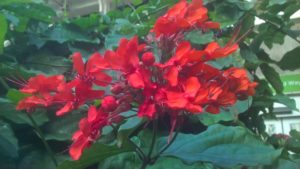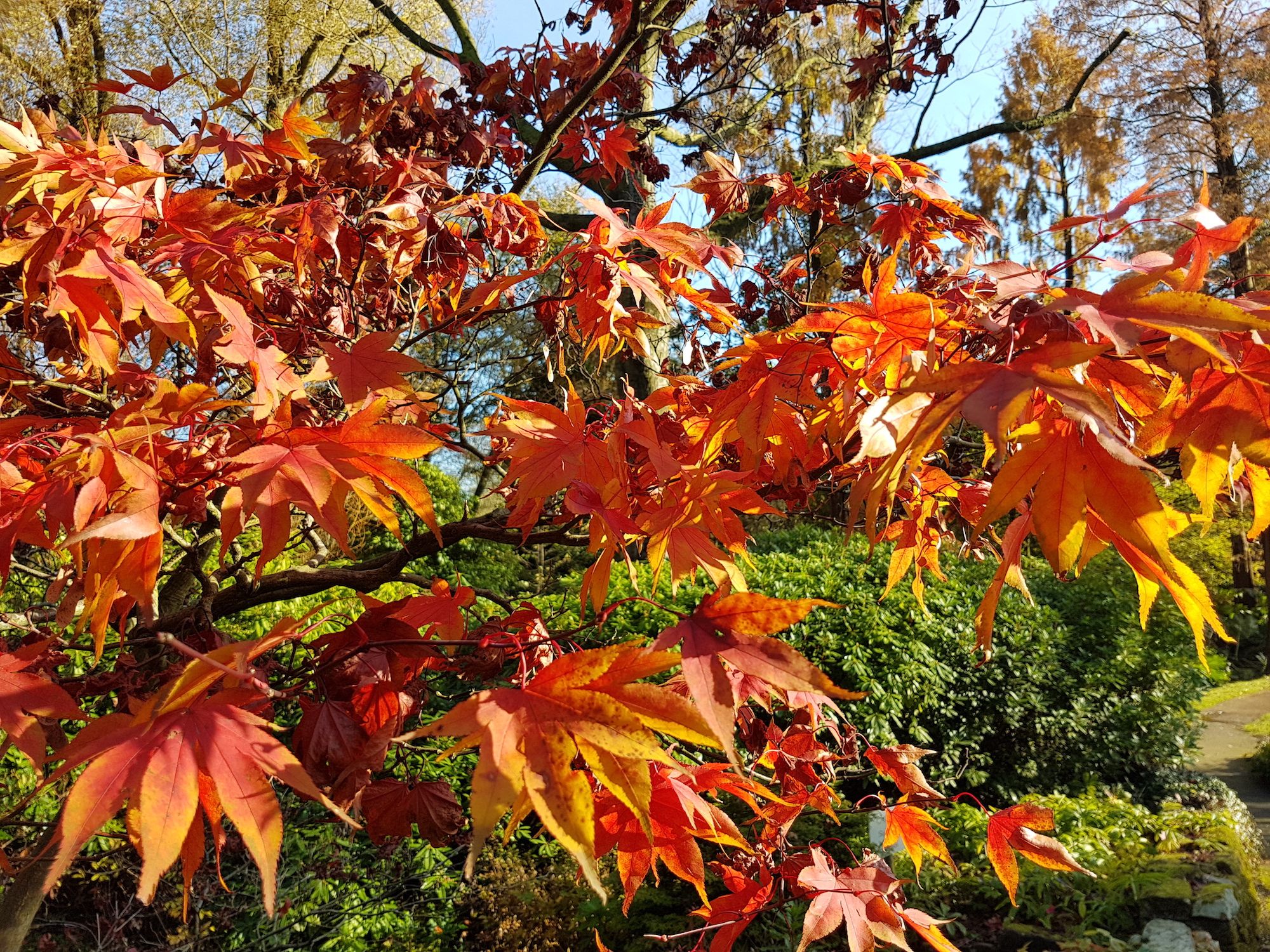April will be a busy month around the Gardens, with all different sorts of events, guided tours and initiatives taking place. Every Sunday afternoon, from now until September, we’ll have music ensembles on the bandstand, on the main lawn. Jazz music echoing around the Gardens is always a joy to hear, especially when the weather is sunny!
The Japanese Garden Society is due to come on site to help with the maintenance of the Japanese Garden. The members of the Society are highly skilled in Japanese gardening and horticultural techniques. Among the jobs they will do are trimming the “karikomi” azalea and box topiary, pruning trees and shrubs, and thinning the bamboos. They’ll also topdress the Japanese Garden with limestone gravel, which will enhance the atmosphere.
We’re also really excited to watch as our newly planted herbaceous border wakes up from its winter slumber, with temporary hazel structures coppiced from our nature reserve to help support the tallest plants.
We will welcome students from BMet College, who will help us to carry out with lawn repairs, and other seasonal jobs. Last month, some groups helped to prune the roses in the Rose Garden, which meant that the job was finished faster and more efficiently, and prune shrubs and trees.
The Gardens will be a riot of colour this month and from the middle of April, the magnolias will be stunning in the Rock Garden (fingers crossed we don’t have any late frosts that will damage the flowers).
Meanwhile, horticultural activities in the nurseries are in full swing. We’ll be planting Pericallis Senetti™ and Schizanthus, commonly known as ‘poor man’s orchids’, as well as potting 3,500 bedding plug plants into cells and growing them in the nursery, before planting them out in late May once the risk of frost has passed.
We’ll also be replacing the pelargoniums in the Mediterranean House, with young plants propagated from cuttings last September. These will flower all summer long and, with luck, throughout next autumn and winter, too.
We’ve been working on our interpretation labels. This time last year, we labelled 200 educational plants within the glasshouses and this year, we’ve been tackling the Wilson border, one of the most beloved areas of our Gardens.
A set of new, dedicated plant labels describe the connection between the plants and the famous plant hunter Ernest “Chinese” Wilson, who worked at Birmingham Botanical Gardens. The plants are clearly described with up-to-date facts and findings according to APGIV (Angiosperm Phylogeny Group classification 4), the latest in plant nomenclature (naming) since 2016. The planting in the border will also be incremented with some new specimens, all of them being Wilson’s introductions.
We hope you enjoy all the Gardens have to offer this month.
SEASONAL TIPS FOR APRIL
As you can tell, April is a great time to get out in your garden, and there is so much you can do. Here are some tasks for the month:
- Finish sowing tomato seeds indoors ready to plant out. If you’re struggling for growing space, buy ready-grown tomato plants and grow them on.
- Continue to sow all hardy and tender seeds under cover – take care not to expose them to frost.
- Keep an eye on your seedlings. As soon as they have their first ‘true’ or adult leaves (the pair after the cotyledons or ‘seed leaves’) put them in pots or modules of their own.
- If your greenhouse is heated, plant your summer hanging baskets with plug plants, and keep them under cover until all risk of frost has passed.
- Pinch out the tips of fuchsia shoots and sweet pea plants to encourage bushy plants this summer.
- Dust the mower off and make sure you use a higher cutting setting to prevent shocking or damaging the lawn. By only removing a small portion, this will encourage the grass to produce strong new growth.
- Now the soil is warming up, sow hardy annuals in finely cultivated soil.
- Keep on top of weeding and prevent them flowering and going to seed.
- Start to apply slow release fertiliser around beds and borders.


 February is the month when one of our most iconic plant comes into full bloom. This is Cyclamen coum, which you can see planted en masse throughout the Gardens. Several other Cyclamen species flower in winter: we keep them in our nurseries or on display in the glasshouse by the Alpine Yard. These are Cyclamen persicum (from which the florist cyclamen are bred), C. elegans and C. alpinum (closely related to C. coum), C. libanoticum, C. parviflorum, C. balearicum, C. creticum and C. x schwarzii. On the subject of Cyclamen, the Cyclamen Society will be having its winter show at the gardens on Sunday 10th February; you can find more information
February is the month when one of our most iconic plant comes into full bloom. This is Cyclamen coum, which you can see planted en masse throughout the Gardens. Several other Cyclamen species flower in winter: we keep them in our nurseries or on display in the glasshouse by the Alpine Yard. These are Cyclamen persicum (from which the florist cyclamen are bred), C. elegans and C. alpinum (closely related to C. coum), C. libanoticum, C. parviflorum, C. balearicum, C. creticum and C. x schwarzii. On the subject of Cyclamen, the Cyclamen Society will be having its winter show at the gardens on Sunday 10th February; you can find more information 
